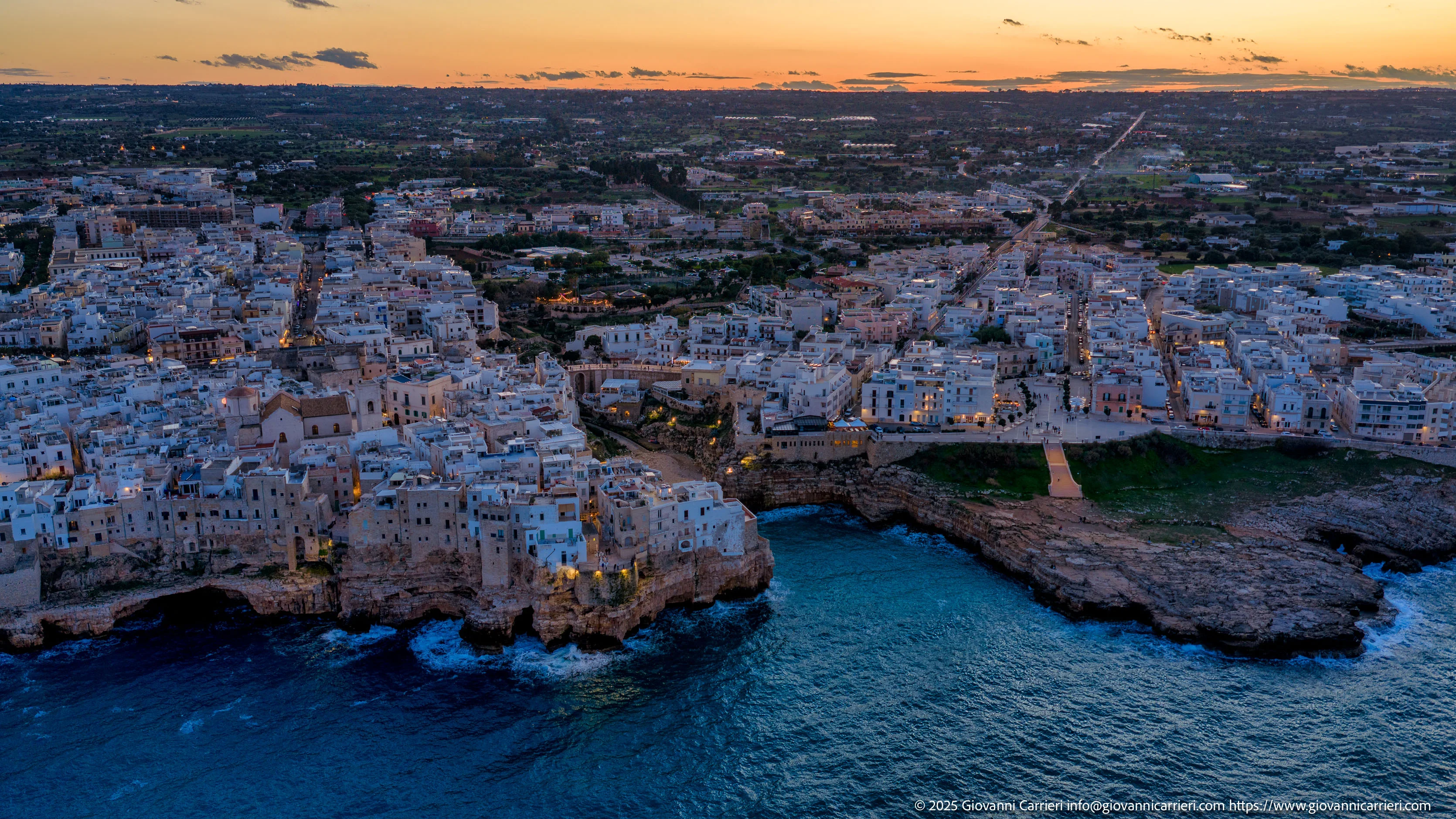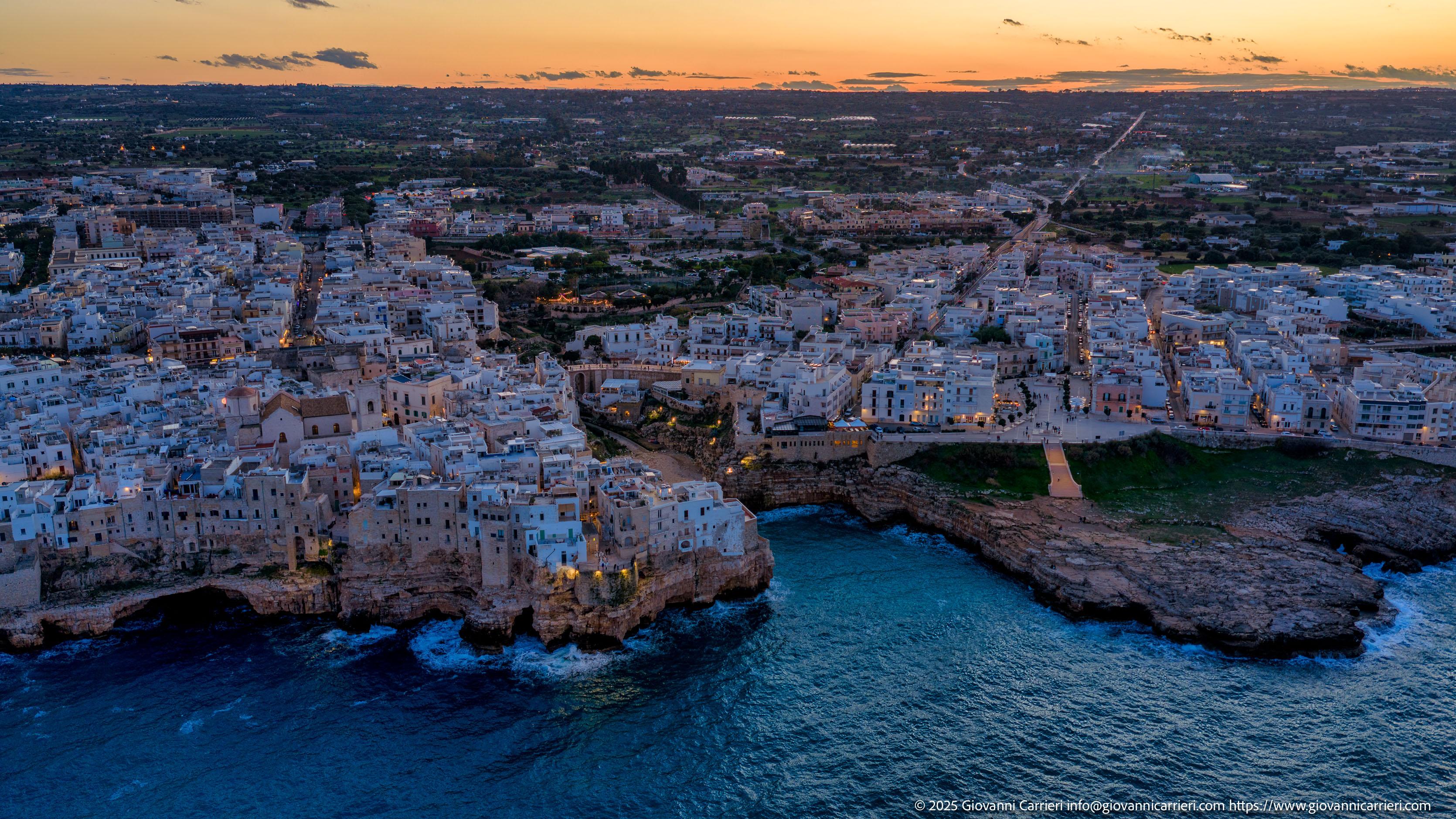Panoramic view of the historical center and hinterland of Polignano a Mare, Puglia, during sunset
This aerial view documents the historical center of Polignano a Mare, a settlement whose origin dates back, according to some evidence, to the Neolithic age, but whose foundation is traditionally attributed to the Greek Dionysius II of Syracuse in the 4th century B.C., who established it as Neapolis. The town stands on a high, jagged limestone cliff that drops sharply into the Adriatic Sea, a strategic location that guaranteed its importance as a maritime stopover along the coast, a role it maintained during the Roman era, as attested by the nearby Via Traiana. The architecture that shapes the village is typical of Apulia, characterized by a compact succession of white lime buildings developed directly on the edge of the rock, utilizing the natural cavities of the sea cliff. Beyond the ancient core, the image also shows the modern urban expansion and a portion of the Apulian hinterland, characterized by Mediterranean vegetation. The captured moment corresponds to sunset hour, with the sky displaying warm orange and pink hues on the horizon. The artificial lights of the residential area and the streets are already illuminated, establishing a chromatic contrast with the colors of the sky and the dark blue waters of the sea, highlighting the historical urban profile and its integration with the surrounding environment.

